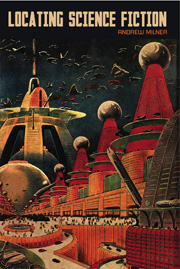Book contents
- Frontmatter
- Contents
- Acknowledgements
- List of Figures
- 1 Memories of Dan Dare
- 2 Science Fiction and Selective Tradition
- 3 Science Fiction and the Cultural Field
- 4 Radio Science Fiction and the Theory of Genre
- 5 Science Fiction, Utopia and Fantasy
- 6 Science Fiction and Dystopia
- 7 When Was Science Fiction?
- 8 Where Was Science Fiction?
- 9 The Uses of Science Fiction
- Works Cited
- Index
9 - The Uses of Science Fiction
- Frontmatter
- Contents
- Acknowledgements
- List of Figures
- 1 Memories of Dan Dare
- 2 Science Fiction and Selective Tradition
- 3 Science Fiction and the Cultural Field
- 4 Radio Science Fiction and the Theory of Genre
- 5 Science Fiction, Utopia and Fantasy
- 6 Science Fiction and Dystopia
- 7 When Was Science Fiction?
- 8 Where Was Science Fiction?
- 9 The Uses of Science Fiction
- Works Cited
- Index
Summary
We set out to answer four main questions: what, positively, was SF? what, negatively, wasn't it? when was it? and, finally, where was it? Our answer to the first question, developed in chapters 2 and 3 and elaborated in chapter 4, was that SF is a ‘selective tradition’, in Williams's terms, and that this selective tradition is produced and reproduced institutionally by the SF subfield of the general cultural field, defined in terms borrowed loosely from Bourdieu. Our answer to the second, developed in chapters 5 and 6, was that SF, utopia, dystopia and fantasy are analytically distinct but cognate genres, the relationship between which can be represented as a classical Venn diagram. The answer to the third, outlined in chapter 7, was that the genre is underpinned by a distinctly modern ‘structure of feeling’, in Williams's sense, which assumes that sciences normally can and normally will be applied as technologies, a structure of feeling which dates only from the early nineteenth century and is structured around what Adorno and Horkheimer called ‘the dialectic of Enlightenment’ and also a countervailing ‘dialectic of Romanticism’. The answer to the last, given in chapter 8, was that the global SF field is organised as a core–periphery system, in Moretti's terms, where the core was originally Anglo-French but later moved to the United States, the semiperiphery variously German, Russian, Czech, Polish and Japanese, and the rest of the world, including Australia where I live and work, essentially peripheral.
- Type
- Chapter
- Information
- Locating Science Fiction , pp. 178 - 198Publisher: Liverpool University PressPrint publication year: 2012



